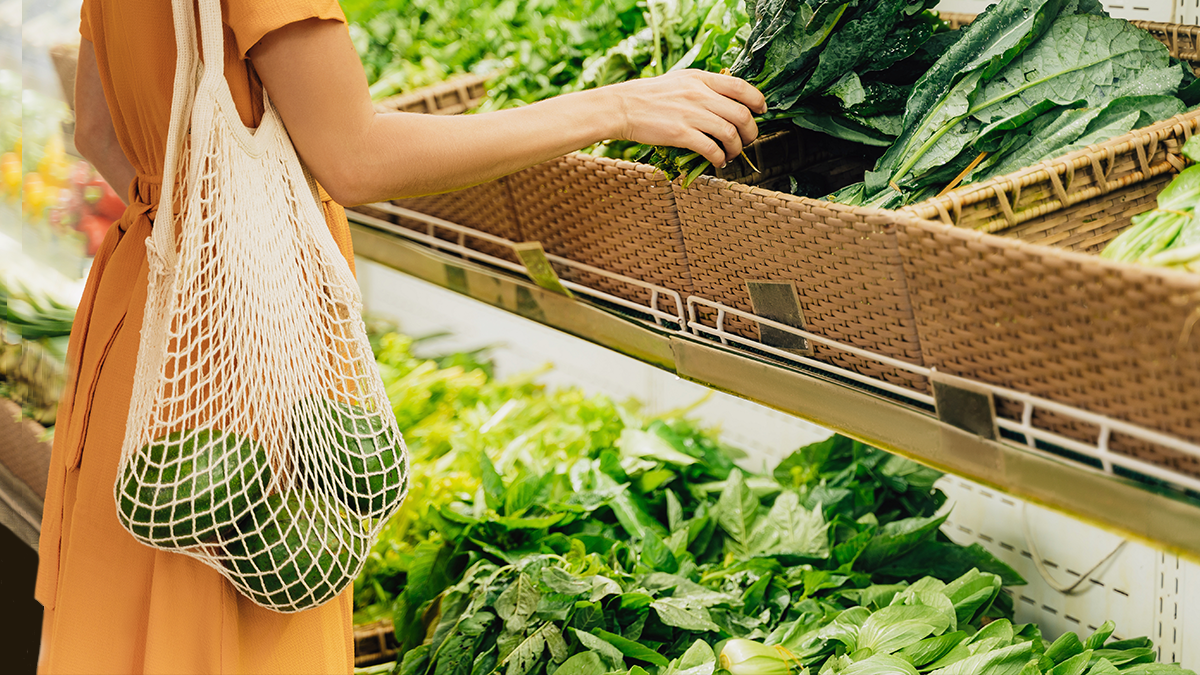Cisco: 4 Ways To Break Up With Single-Use Plastic This July
Published 07-31-23
Submitted by Cisco Systems, Inc.

Did you know July kickstarts a month-long global challenge to remove plastic from your daily routine?
As an Energy and Sustainability Manager for Cisco’s Workplace Resources (WPR) group, I am passionate about waste reduction, especially the reduction of single-use plastics.
Why focus on plastic? Half of all plastic produced is designed for single-use purposes — used just once and then thrown away. On top of that, it is made from petroleum, a type of fossil fuel that contributes to global warming.
According to the Pew Charitable Trusts, “An estimated 11 million metric tons of plastic waste enter the ocean every year. Without immediate and sustained action, that amount will nearly triple by 2040, to 29 million metric tons per year. That’s the same as dumping 110 pounds (50 kilograms) of plastic on every meter of coastline around the world.”
Plastic Free July® is a key initiative of the Plastic Free Foundation that envisions a world free of plastic waste. The Plastic Free Foundation 2022 Impact Report shows that last year’s Plastic Free July had a record 140 million participants making conscious changes that reduced plastic waste by 2.6 million tonnes — that’s the equivalent of around 13 thousand blue whales.
Want to join the movement in breaking up with single-use plastic? Here are four suggestions inspired from the Plastic Free Foundation on how you can get started, and some advice from Cisco Green Team Network members, which is an Inclusive Community for Cisco employees who are interested in sustainability:
1. When eating out: Refuse plastic straws and plastic cutlery, bring reusable alternatives instead.
It’s easy when you’re eating out to just accept a straw or fork made from plastic, but it is only used for a few minutes and then discarded. According to the Natural Resource Defense Council (NRDC), most plastics end up in landfills or in the environment, “Single-use plastics in particular—especially small items like straws, bags, and cutlery—are traditionally hard to recycle because they fall into the crevices of recycling machinery and therefore are often not accepted by recycling centers. Left alone, plastics don’t really break down; they just break up. Over time, sun and heat slowly turn plastics into smaller and smaller pieces until they eventually become what are known as microplastics.”
“I’m inspired to reduce plastic waste not only because it is the right thing to do but it is now part of my everyday life,” says Green Team member Thea Zaralidou from Greece. “I’m motivated by my two young sons. We have taught them the importance of recycling, reusing and how this can affect the community around them. In primary school, they have learned about the dangers of plastics to the wildlife and the beaches here in Greece.”
Although plastic straws and plastic cutlery are a small part of a bigger problem, it’s a good place to start eliminating single-use plastic from your life. Request that your drink be served without a single-use plastic straw or use a paper straw if one is available. For those with accessibility issues or for those who would still like a straw, try reusable options made from materials like stainless steel or glass. There are even foldable versions that you can easily bring with you next time you go out. When it comes to plastic cutlery, there are portable options for those as well, usually made from stainless steel or bamboo. If you’re ordering takeout, be sure to let the restaurant know you don’t want them to include single use plastic cutlery with your order.
2. While you’re shopping: Use your own reusable shopping bags and avoid plastic packaging when buying items at the grocery store.
Like other single-use plastic products, plastic bags and packaging do not biodegrade and are unlikely to be recycled. According to the New York Times, “The bigger problem arises when people don’t dispose of their bags properly, and the plastic ends up fluttering around in the wild, clogging up waterways and threatening wildlife.”
Reusable shopping bags are colorful and convenient; just store them in a place you won’t forget, like by the front door or in your car. Choose bags made from natural or recycled fibers such as ethically produced cotton or recycled plastic bottles. Want to make a bigger impact with a smaller footprint? You can make your own reusable shopping bags from an old piece of clothing.
According to a 2020 review, the bulk of plastic waste that is polluting the environment is due to food packaging plastics. When you’re shopping for groceries, try to avoid pre-packaged, single-use plastic. Opt to buy loose or bulk fruits and veggies instead, and bonus points if you bag them with lightweight, reusable produce bags. Most bags can be thrown directly into your washing machine when they need a clean. You can take this one step further with deli and baked goods by bringing your own reusable container.
Green Team member Cristobal Sayrols Estrada, from Mexico City, practices sustainable shopping. “I have adopted daily habits to minimize my use of single-use plastics. I prioritize purchasing products from locally sourced grocery stores or markets and consciously avoid plastic film and containers,” Cristobal says. “When I go grocery shopping, I bring my own reusable bags and containers to reduce waste. By implementing these practices, I hope to contribute to the reduction of plastic waste and protect our environment.”
3. When you’re on the go: Bring a reusable coffee mug and use a reusable water bottle.
According to a 2023 report from the UN, “…the world currently generates around 600 billion plastic bottles amounting to approximately 25 million tonnes of plastic waste, which is not recycled but is disposed of in landfills or as unregulated waste.”
With hybrid work, it can be easy to pick up your favorite drink on your way into the office, served in a single use plastic container.
While more people are using reusable water bottles these days, many people forget to bring a reusable container when they go to a coffee shop.
Paper coffee cups, despite the name, have a plastic lining that keeps the liquid from dissolving the cup, and are often capped with a plastic lid.
Many shops are happy to fill-up your personal container, some will even give you a discount for bringing it in. Or if you plan to hang out and work for a while, request a ceramic cup or mug.

Green team members Sharon Hatego from Kenya and Diana Mehnen from Germany bring reusables on the go. Sharon says, “I always carry my water bottle so I don’t have to buy bottled water. Even my kids know this — it’s right up there with bathroom check before we leave the house.” And Diana carries her own travel cup for plane travel and refill options — see photo above.
4. While at home: Avoid using home goods products packaged in single-use plastic.
According to the Ellen MacArthur Foundation, your average bottle of household cleaner is 90% water. Stop paying for water and explore concentrated or refill cleaners to reduce household plastic waste.
Many cleaning products, from window cleaners to clothing detergent, come in single-use plastic containers. Bulk food stores can be a great place to look for alternatives. Many stores allow you to bring in a personal container (or get one at the store) and refill your soap, detergent, and shampoo (to name just a few options). Once you have tried this, explore other packaging-free items available in-store.
Another option to explore is concentrated cleaning products. Try powdered laundry detergent or soap concentrates. Many of these products work just like their traditional counterparts when they are introduced to water. While you may not completely eliminate plastic with these options, you will greatly reduce the emissions, and therefore fossil fuels, required for production and transportation of your household cleaners.
Green Team member Karen Bruntz from the United States reduces plastic in her beauty products as well. “I use shampoo and conditioner bars and only bar soap to avoid plastic bottles,” she says.
Ready to break-up with single use plastic? Join the Plastic Free July challenge!
If you would like more information about what Cisco is doing in regard to our environmental, social, and governance (ESG) initiatives, goals and commitments, our latest impact, as well as policies and additional disclosures for specialized audiences, please see our 2022 Cisco Purpose Report and supplemental information in our ESG Reporting Hub.

Cisco Systems, Inc.
Cisco Systems, Inc.
About Cisco
Cisco (NASDAQ: CSCO) is the worldwide leader in technology that powers the internet. Cisco inspires new possibilities by reimagining your applications, securing your data, transforming your infrastructure, and empowering your teams for a global and inclusive future. Discover more on The Network and follow us on Twitter.
About Cisco's Purpose
Cisco’s purpose is to Power an Inclusive Future for All. From increasing access to skills needed to thrive in a digital economy to supporting the most vulnerable in times of crisis, we’re committed to using our technology for good. Cisco is also leveraging our scale and innovation to help ensure that our increasingly digital future is sustainable, inclusive, and resilient.
More from Cisco Systems, Inc.

